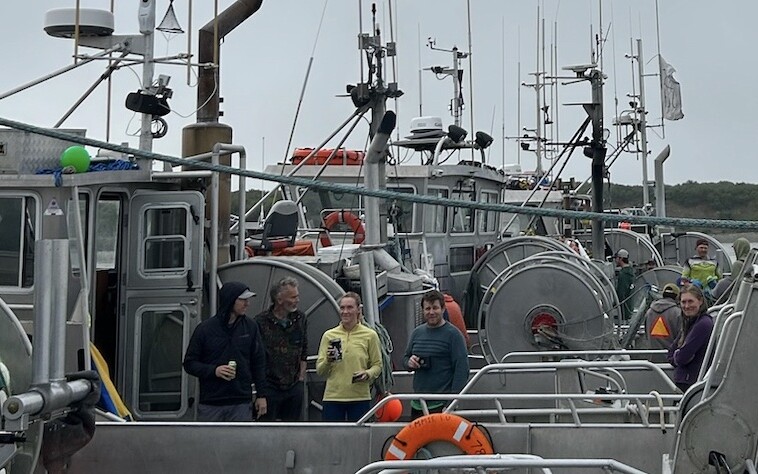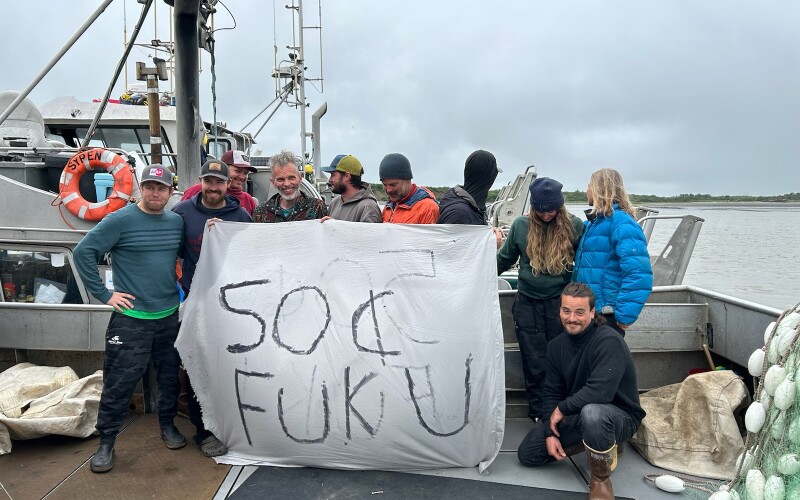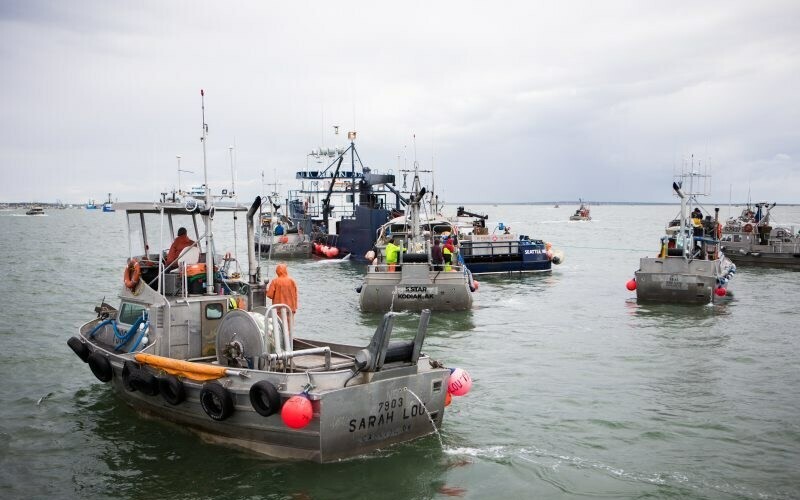Nearly 50 percent price drop from 2022 shocked fleet
As the fishing calendar in Alaska rolled over to August, the statewide harvest for all five species in all areas and all districts stood at 99.3 million fish. Overall, ex-vessel prices dropped to almost half of what brick-and-mortar processors had been willing to pay in 2022.
Of those fish, the sockeye harvest came out ahead of pinks (40 million), with a preliminary harvest just short of 47 million, but late-season pink seine fisheries in Southeast, Kodiak, Prince William Sound and the Alaska Peninsula could surpass sockeye numbers as some runs peak in mid to late August. As expected, the chinook harvest came in weak at 160,000 fish, while chums added up to 11.8 million. The coho harvest, meanwhile, stood at 466,000.
The pre-season forecast had been calculated at 189 million fish. In terms of volume pinks had been predicted to dominate the total catch at 122.2 million fish. Sockeyes, on the other hand, will come in close to their pre-season forecast of 48.2 million.
When it comes to ex-vessel prices, the value of the 2023 salmon pack will hit a sharp downtick, no thanks to dockside offers of just 50 cents per pound for sockeyes in Bristol Bay. Landings there as of August 4 had hit more than 39 million fish.
Fishing began in early July on “open ticket,” meaning a price had not been settled with processors when the onslaught of sockeyes arrived. Fishermen set their nets in hopes that the initial price would be closer to the average base price of $1.15 per pound they received last year. With news of the 50 cents, some fishermen staged a protest in Naknek July 20, while others folded up their operations and left for home.

“It was such a big shock,” says Danielle Larsgaard, a setnetter who fishes the Nushagak each summer. “Everyone kept asking, ‘When are they going to announce a price?’”
Larsgaard says that with the price announcement many deckhands quit, skippers put up their boats and market-based social media began blowing up with ads to sell permits and boats.
“Fishermen began trickling out of the Bay immediately,” she says. “Last year was such a big catch and a big price,” she says.
In Cook Inlet, fishermen landed 1.7 million sockeyes, and processor offers came in at $1.10 per pound, which was stronger than Bristol Bay, but a far cry from the average Cook Inlet price of $2.03 per pound in 2022. The severe price drop was enough to keep some fishermen from wetting their nets.
Though this season’s Cook Inlet harvest more than doubles the 659,000 sockeyes the fleet landed last year the ex-vessel prices didn’t add up for some, and they chose to sit out on openings where weather or other mishaps could put revenues in the red.
“Fish are showing up here. Nice-sized fish and lots of them,” says a drift fisherman, who asked to remain anonymous in a text message to National Fisherman. “But at $1.10, I can’t fish for that price, buck the wind and the tide. Five-foot seas, and a $3,000 net. Can’t do it.”
Alaska’s statewide average ex-vessel prices for 2022 have been posted at $1.89 per pound, according to the Alaska Department of Fish and Game.

Meanwhile, Southeast trollers had landed 85,000 chinooks, 105,000 chums and 227,000 coho in their summer season.
“Our king (chinook) allocation is low this year,” says Amy Daugherty, executive director of the Alaska Trollers Association, in Juneau. “So, the guys are catching cohos right now.” Ex-vessel prices for the chinooks remained strong at $5.80 per pound, up from the average $5.54 paid in 2022 while prices paid for chums dropped to 50 cents per pound, less than half of last year’s $1.18 per pound. The fleet blames this year’s high-volume harvest of Bristol Bay sockeye for ratcheting down dockside offers for non-chinook species.
Bad news kept coming with a Aug. 5 letter from Trident Seafoods to its fishermen, warning that “chum markets have collapsed” and the company would only pay $0.20 for all Alaska chum.
The company planned to stop buying all salmon in all areas Sept. 2, except for Petersburg and Cordova South to maintain support for coho fisheries. Trident would not participate in Puget Sound or fall salmon fisheries.
“Last week, Russia harvested pink volume equivalent to the entire Alaska pink annual forecast, and they have shown a willingness to offload inventory at very low prices in part to fund the war in Ukraine,” Trident CEO Joe Bundrant and senior vice president Jeff Welbourn wrote in the letter.
“We haven’t seen a collapse in value like this since the 1990s when pinks went well under ten cents a pound,” they wrote.
Of a projected harvest of more than 61 million pinks, (hatchery and wild production combined) the Prince William Sound pink harvest stood just shy of 27 million in early August, but those numbers could double by the end of the season, which stretches through August. Last year’s statewide ex-vessel prices for pinks averaged 39 cents per pound.
Seine and drift and set gillnet fleets around Unimak Island and the North and South Alaska Peninsula (Area M) had landed 2.5 million sockeyes, 2.1 million pinks, 611,000 chums and 93,000 cohos.
The Kodiak seine fleet had bested Area M in pink salmon landings, with a harvest of 2.9 million as of August 4.







